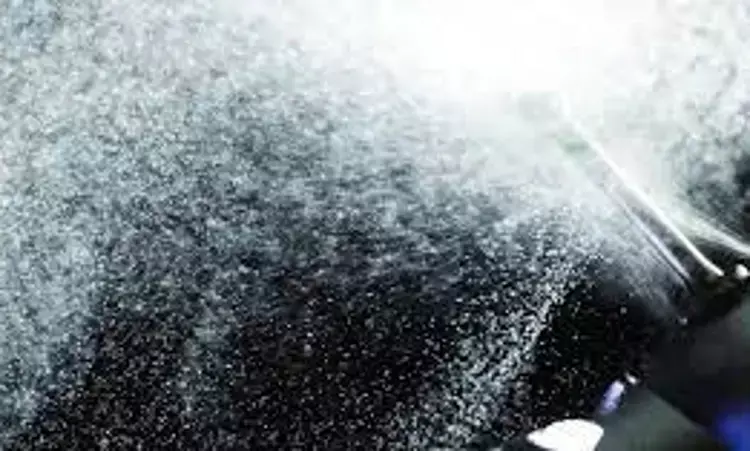- Home
- Medical news & Guidelines
- Anesthesiology
- Cardiology and CTVS
- Critical Care
- Dentistry
- Dermatology
- Diabetes and Endocrinology
- ENT
- Gastroenterology
- Medicine
- Nephrology
- Neurology
- Obstretics-Gynaecology
- Oncology
- Ophthalmology
- Orthopaedics
- Pediatrics-Neonatology
- Psychiatry
- Pulmonology
- Radiology
- Surgery
- Urology
- Laboratory Medicine
- Diet
- Nursing
- Paramedical
- Physiotherapy
- Health news
- Fact Check
- Bone Health Fact Check
- Brain Health Fact Check
- Cancer Related Fact Check
- Child Care Fact Check
- Dental and oral health fact check
- Diabetes and metabolic health fact check
- Diet and Nutrition Fact Check
- Eye and ENT Care Fact Check
- Fitness fact check
- Gut health fact check
- Heart health fact check
- Kidney health fact check
- Medical education fact check
- Men's health fact check
- Respiratory fact check
- Skin and hair care fact check
- Vaccine and Immunization fact check
- Women's health fact check
- AYUSH
- State News
- Andaman and Nicobar Islands
- Andhra Pradesh
- Arunachal Pradesh
- Assam
- Bihar
- Chandigarh
- Chattisgarh
- Dadra and Nagar Haveli
- Daman and Diu
- Delhi
- Goa
- Gujarat
- Haryana
- Himachal Pradesh
- Jammu & Kashmir
- Jharkhand
- Karnataka
- Kerala
- Ladakh
- Lakshadweep
- Madhya Pradesh
- Maharashtra
- Manipur
- Meghalaya
- Mizoram
- Nagaland
- Odisha
- Puducherry
- Punjab
- Rajasthan
- Sikkim
- Tamil Nadu
- Telangana
- Tripura
- Uttar Pradesh
- Uttrakhand
- West Bengal
- Medical Education
- Industry
Barriers are most effective aerosol mitigation strategy in dental clinics: Study

Barriers are the most effective dental aerosol mitigation strategy, according to a recent study published in the Journal of the American Dental Association.
A dental aerosol is an aerosol that is produced from dental instruments, dental handpieces, three-way syringes, and other high-speed instruments. These aerosols may remain suspended in the clinical environment. Dental aerosols can pose risks to the clinician, staff, and other patients. The heavier particles (e.g., >50 µm ) contained within the aerosols are likely to remain suspended in the air for a relatively short period and settle quickly onto surfaces, however, the lighter particles may remain suspended for longer periods and may travel some distance from the source. Aerosols are generated routinely during patient care in dentistry. Managing exposure risk requires understanding characteristics of aerosols created during procedures such as those performed using high-speed drills that operate at 200,000 revolutions per minute.
With thorough preoperative planning and the use of this investigation's findings of the effectiveness of mitigation strategies as a guide, dental offices may be able to return to prepandemic productivity.
A trained dentist performed drilling procedures on a manikin's incisors (teeth nos. 8 and 9) using a high-speed drill and high-volume evacuator. The authors used high-speed imaging to visualize the formation and transport of aerosol clouds and particle sampling to measure aerosol concentration and size distribution at several locations. The authors studied several aerosol mitigation strategies.
The Results of the study are:
Aerosols produced during high-speed drilling were erratic and yielded high concentrations that were at least an order of magnitude above baseline. High-speed imaging showed aerosols initially travelled at 1 m per second. Owing to the erratic behaviour of aerosols, supplemental suction was not effective at collecting all aerosols; however, barriers were effective.
Thus, the researchers concluded that the barriers are the most effective mitigation strategy. Other methods studied have limitations and risks. To the authors' knowledge, this article presents the first characterization of aerosols generated during high-speed drilling by a dentist.
Reference:
Experimental evaluation of aerosol mitigation strategies in large open-plan dental clinics by Min Zhu et al. published in the Journal of the American Dental Association.
https://www.sciencedirect.com/science/article/abs/pii/S0002817721005432
Dr. Shravani Dali has completed her BDS from Pravara institute of medical sciences, loni. Following which she extensively worked in the healthcare sector for 2+ years. She has been actively involved in writing blogs in field of health and wellness. Currently she is pursuing her Masters of public health-health administration from Tata institute of social sciences. She can be contacted at editorial@medicaldialogues.in.
Dr Kamal Kant Kohli-MBBS, DTCD- a chest specialist with more than 30 years of practice and a flair for writing clinical articles, Dr Kamal Kant Kohli joined Medical Dialogues as a Chief Editor of Medical News. Besides writing articles, as an editor, he proofreads and verifies all the medical content published on Medical Dialogues including those coming from journals, studies,medical conferences,guidelines etc. Email: drkohli@medicaldialogues.in. Contact no. 011-43720751


